Showing Spotlights 73 - 80 of 254 in category All (newest first):
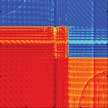 Valleytronics is an emerging field exploiting electron's valley degree of freedom for device applications. This novel concept is based on utilizing the wave quantum number of an electron in a crystalline material. One major challenge in valleytronic-based electronics is the lack of all-electrical-controlled valley filter, a device that produces valley-polarized current via electrical controlling knob and serves as a fundamental building block of valleytronics. Researchers now have proposed a versatile all-electric-controlled valley filter and demonstrate, for the first time, a concrete working design of valleytronic-based logic gate capable of performing all 16 types of Boolean logics.
Valleytronics is an emerging field exploiting electron's valley degree of freedom for device applications. This novel concept is based on utilizing the wave quantum number of an electron in a crystalline material. One major challenge in valleytronic-based electronics is the lack of all-electrical-controlled valley filter, a device that produces valley-polarized current via electrical controlling knob and serves as a fundamental building block of valleytronics. Researchers now have proposed a versatile all-electric-controlled valley filter and demonstrate, for the first time, a concrete working design of valleytronic-based logic gate capable of performing all 16 types of Boolean logics.
Dec 19th, 2017
 Researchers have demonstrated a novel approach toward smart orthodontics based on near-infrared red light from a mechanically flexible LED powered by flexible bio-safe batteries all integrated in a single 3D-printed dental brace. Integration of electronic devices in 3D printed dental aligners is a pragmatic approach towards implementing a flexible electronic technology in personalized advanced healthcare, particularly in orthodontics. Key to this smart brace is the use of a high-performance flexible solid-state microbattery.
Researchers have demonstrated a novel approach toward smart orthodontics based on near-infrared red light from a mechanically flexible LED powered by flexible bio-safe batteries all integrated in a single 3D-printed dental brace. Integration of electronic devices in 3D printed dental aligners is a pragmatic approach towards implementing a flexible electronic technology in personalized advanced healthcare, particularly in orthodontics. Key to this smart brace is the use of a high-performance flexible solid-state microbattery.
Nov 16th, 2017
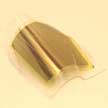 For enhanced visualization experience, high resolution display technology with fast frame rate to suppress the motion blur at that resolution is essential. In modern display technologies, which are mostly active matrix display system, there are planar thin film transistors (TFTs) which enable both high resolution and fast imaging. Scaled TFTs can provide high resolution. Fast switching can be facilitated by the scaling as well as high mobility channel material. In new work, researchers have shown that both high resolution and fast frame rate display technology is possible, irrespective of the active channel material.
For enhanced visualization experience, high resolution display technology with fast frame rate to suppress the motion blur at that resolution is essential. In modern display technologies, which are mostly active matrix display system, there are planar thin film transistors (TFTs) which enable both high resolution and fast imaging. Scaled TFTs can provide high resolution. Fast switching can be facilitated by the scaling as well as high mobility channel material. In new work, researchers have shown that both high resolution and fast frame rate display technology is possible, irrespective of the active channel material.
Nov 14th, 2017
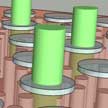 Memristors present an opportunity to make new types of computers that are different from existing von Neumann architectures, which traditional computers are based upon. In new work, researchers have demonstrated the ability to reversibly control the learning properties of memristors via optical means. They show that light can be used in a reversible manner to change the connection strength (or conductivity) of artificial memristor synapses and as well control their ability to forget i.e. we can dynamically change device to have short-term or long-term memory. The reversibility is achieved by changing the polarization of light.
Memristors present an opportunity to make new types of computers that are different from existing von Neumann architectures, which traditional computers are based upon. In new work, researchers have demonstrated the ability to reversibly control the learning properties of memristors via optical means. They show that light can be used in a reversible manner to change the connection strength (or conductivity) of artificial memristor synapses and as well control their ability to forget i.e. we can dynamically change device to have short-term or long-term memory. The reversibility is achieved by changing the polarization of light.
Oct 30th, 2017
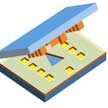 Researchers demonstrate a novel assembly technique for transforming traditional state-of-the-art complementary metal oxide semiconductor (CMOS) based integrated circuits (IC) and other electronic components into LEGO-like modules by providing unique geometrical identity to each module; and assembling these 'LEGO IC' without the need for bonding or soldering but with the highest yield, accuracy and throughput required to maintain a high system performance.
Researchers demonstrate a novel assembly technique for transforming traditional state-of-the-art complementary metal oxide semiconductor (CMOS) based integrated circuits (IC) and other electronic components into LEGO-like modules by providing unique geometrical identity to each module; and assembling these 'LEGO IC' without the need for bonding or soldering but with the highest yield, accuracy and throughput required to maintain a high system performance.
Oct 25th, 2017
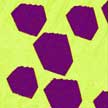 Molecular ferroelectrics are highly desirable as they are environmentally friendly, light-weight, and high spontaneous polarized. Though intensive studies have been focused on molecular ferroelectrics, very few researchers have tried to address the issue of thin film growth. An international research team now presents the first report on the preparation of high-quality large area MOFE films using in-plane liquid phase growth. With this approach, different kinds of novel ferroelectric films can be grown for potential practical applications such as temperature sensing, data storage, actuation, energy harvesting and storage.
Molecular ferroelectrics are highly desirable as they are environmentally friendly, light-weight, and high spontaneous polarized. Though intensive studies have been focused on molecular ferroelectrics, very few researchers have tried to address the issue of thin film growth. An international research team now presents the first report on the preparation of high-quality large area MOFE films using in-plane liquid phase growth. With this approach, different kinds of novel ferroelectric films can be grown for potential practical applications such as temperature sensing, data storage, actuation, energy harvesting and storage.
Aug 31st, 2017
 Molecular electronics aims to use small organic molecules as the active component in an electrical circuit in order to tailor functionality and achieve new levels of miniaturization with increased functionality via chemical design. Anti-aromatic molecules had been predicted decades ago to have excellent conducting properties. Now researchers have realized a molecular circuit involving an anti-aromatic molecule for the first time.
Molecular electronics aims to use small organic molecules as the active component in an electrical circuit in order to tailor functionality and achieve new levels of miniaturization with increased functionality via chemical design. Anti-aromatic molecules had been predicted decades ago to have excellent conducting properties. Now researchers have realized a molecular circuit involving an anti-aromatic molecule for the first time.
Aug 16th, 2017
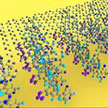 Since the early days of molecular electronics, tremendous progress has been achieved both theoretically and experimentally by scientists and engineers who were fascinated by intriguing physical, chemical phenomena, and potential device applications of molecular junctions. In a recent paper, scientists review recent experimental efforts for pursuing high-yield functional molecular devices, in which a bundle of molecules (the contacted molecules number more than 1000) is contained in a junction.
Since the early days of molecular electronics, tremendous progress has been achieved both theoretically and experimentally by scientists and engineers who were fascinated by intriguing physical, chemical phenomena, and potential device applications of molecular junctions. In a recent paper, scientists review recent experimental efforts for pursuing high-yield functional molecular devices, in which a bundle of molecules (the contacted molecules number more than 1000) is contained in a junction.
Jun 14th, 2017
 Valleytronics is an emerging field exploiting electron's valley degree of freedom for device applications. This novel concept is based on utilizing the wave quantum number of an electron in a crystalline material. One major challenge in valleytronic-based electronics is the lack of all-electrical-controlled valley filter, a device that produces valley-polarized current via electrical controlling knob and serves as a fundamental building block of valleytronics. Researchers now have proposed a versatile all-electric-controlled valley filter and demonstrate, for the first time, a concrete working design of valleytronic-based logic gate capable of performing all 16 types of Boolean logics.
Valleytronics is an emerging field exploiting electron's valley degree of freedom for device applications. This novel concept is based on utilizing the wave quantum number of an electron in a crystalline material. One major challenge in valleytronic-based electronics is the lack of all-electrical-controlled valley filter, a device that produces valley-polarized current via electrical controlling knob and serves as a fundamental building block of valleytronics. Researchers now have proposed a versatile all-electric-controlled valley filter and demonstrate, for the first time, a concrete working design of valleytronic-based logic gate capable of performing all 16 types of Boolean logics.
 Subscribe to our Nanotechnology Spotlight feed
Subscribe to our Nanotechnology Spotlight feed





